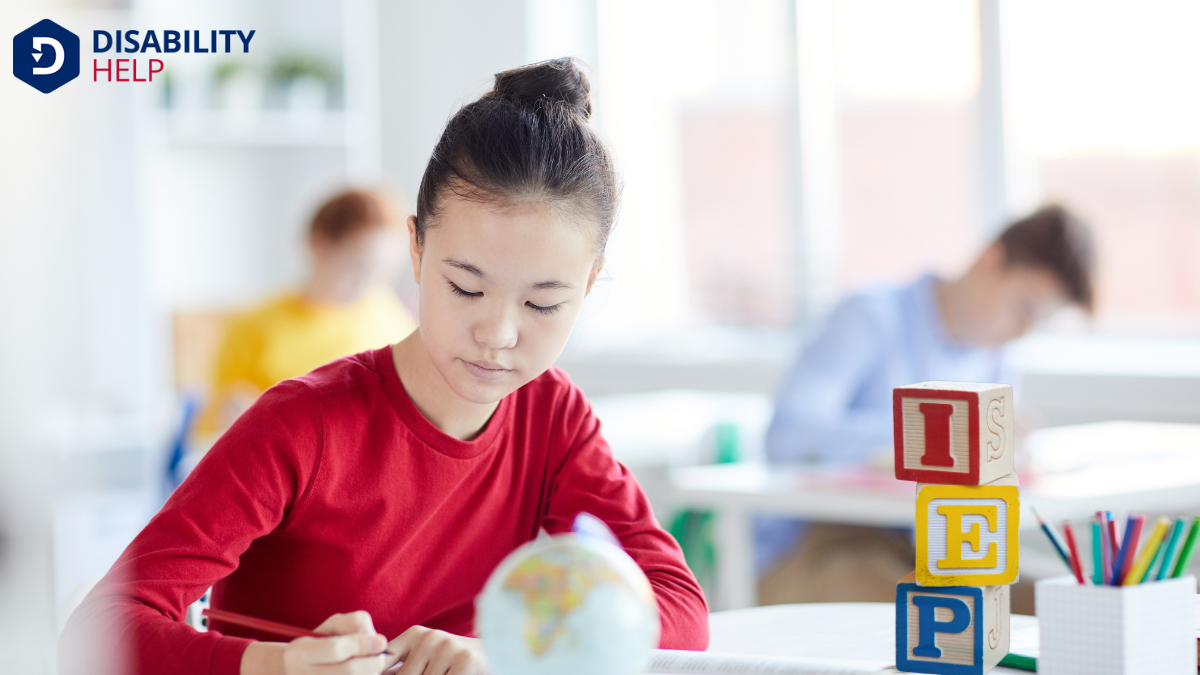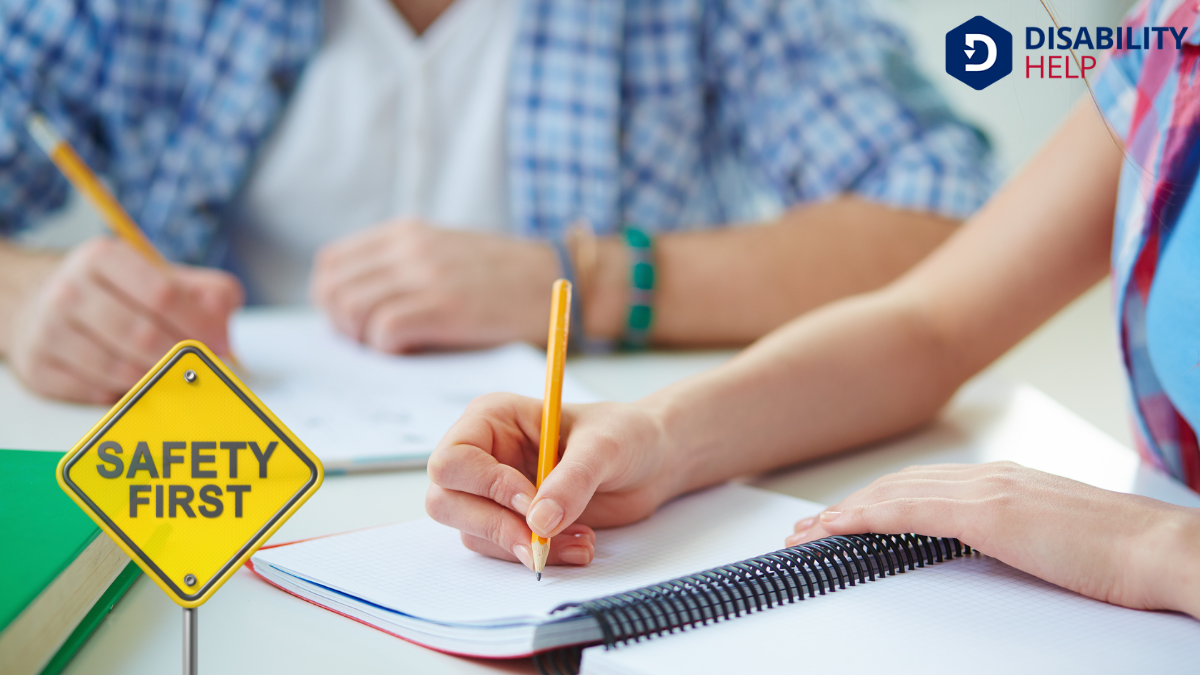When it comes to disciplining students with disabilities, we're faced with a complex issue that involves understanding legal protections and individual needs. The Individuals With Disabilities Education Act (IDEA) provides a framework that schools must follow, ensuring that any behavior directly linked to a student's disability isn't met with punitive actions. But how do we balance this legal requirement with maintaining a safe and conducive learning environment for all students? Let's explore the intricacies involved.
Key Takeaways
- Schools must conduct a Manifestation Determination Review to assess if behavior is linked to a student's disability.
- Discipline cannot be applied if the behavior is deemed a manifestation of the student's disability.
- IDEA mandates fair treatment and appropriate interventions instead of punishment for disability-related misconduct.
- The Honig v. Doe ruling prohibits expulsion for behavior caused by a disability.
- An Individualized Education Program (IEP)A plan developed for U.S. students with disabilities to ensure they receive tailored educational ser... review is essential to address and adjust support strategies.
Understanding Disability Protection Laws
When we explore disability protection laws, it’s essential to understand how these regulations are designed to support students with disabilities in educational settings.
These laws guarantee that students receive appropriate accommodationsModifications or adjustments in healthcare settings to support patients with disabilities., enabling them to access the same educational opportunities as their peers. We recognize that the primary goal is to prevent discrimination and provide a fair learning environment for all students.
We must appreciate that these protections include requirements for schools to identify and evaluate students who may need special assistance.
The Role of the Individuals With Disabilities Education Act (IDEA)

As we consider the Individuals With Disabilities Education Act (IDEA), it’s crucial to focus on its main objectives: safeguarding student rights and guaranteeing equitable handling of misconduct.
IDEA's framework guarantees that students with disabilities aren't unfairly disciplined, protecting their right to a free and appropriate public education.
IDEA's Main Objectives
The Individuals with Disabilities Education Act (IDEA) serves as a cornerstone in guaranteeing that students with disabilities receive a free and appropriate public education tailored to their unique needs.
It focuses on providing individualized education programs (IEPs) that cater to the specific requirements of each student. We seek to foster an inclusive environment where these students can thrive alongside their peers.
IDEA emphasizes collaboration between parents, educators, and specialists to develop effective educational plans.
Through its main objectives, we guarantee accountability in school systems, ensuring they meet students' educational needs.
It also mandates that schools provide necessary services and supports, allowing students to achieve their full potential.
Protecting Student Rights
While safeguarding educational equityFairness and justice in the way people are treated, especially in the allocation of resources and op..., IDEA plays a crucial role in protecting the rights of students with disabilities.
We recognize the importance of creating a learning environment where every student feels valued and supported. IDEA helps us achieve this by making certain that schools:
- Provide individualized education plans (IEPs) tailored to each student's needs.
- Offer necessary accommodations to level the playing field.
- Conduct regular evaluations to monitor progress and adjust support as needed.
- Involve parents and guardians in decision-making processes.
- Guarantee access to free and appropriate public education (FAPE).
These measures make sure that we uphold the rights of students with disabilities and promote their academic and social success.
Addressing Misconduct Equitably
When addressing student misconduct, it's essential that we guarantee equitable treatment for those with disabilities, and IDEA provides the framework to do just that. This law assures students with disabilities aren’t unfairly disciplined for behaviors linked to their disabilities.
By requiring schools to conduct a Manifestation Determination Review, IDEA helps decide if a student’s misbehavior is related to their disability. We must collaborate with educators and parents to understand the root causes of behavior and determine appropriate interventions.
It’s not about excusing misconduct but guaranteeing fair treatment and support. By following IDEA’s guidelines, we can create an environment where all students, regardless of ability, receive justice and an opportunity to learn and grow in a supportive setting.
Distinguishing Between Misbehavior and Disability-Related Behavior
Understanding the difference between misbehavior and disability-related behavior is essential in creating an inclusive and supportive school environment.
We need to recognize that not all behaviors stem from intentional misconduct. Sometimes, actions are a manifestation of a student's disability. By distinguishing between these two, we can better support our students.
Here are some considerations to keep in mind:
- Observe patterns: Look for consistent behaviors linked to specific triggers.
- Communicate: Engage with the student and parents to gain insights.
- Collaborate with specialists: Work with special educationCustomized educational programs designed to meet the needs of students with disabilities. professionals for guidance.
- Educate ourselves: Understand the student's disability and its potential impact.
- Maintain empathyThe ability to understand and share the feelings of another, particularly important in understanding...: Approach each situation with understanding and patience.
The Process of Manifestation Determination
As we explore the process of manifestation determination, it’s crucial to reflect on how a student's disability might influence their behavior.
We need to carefully evaluate the specific incident in question and use established criteria to guide our decision-making.
Assessing Disability Impact
Although it may seem complex, evaluating the impact of a disability on a student's behavior involves a critical process known as manifestation determination.
We must assess whether the behavior in question is directly related to the student's disability. This process guarantees fair treatment and appropriate interventions.
Here's how we approach it:
- Review the student's Individualized Education Program (IEP): Understand their needs and accommodations.
- Analyze behavioral history: Identify patterns that might point to a disability-related issue.
- Consult with teachers and specialists: Gather insights from those who know the student well.
- Examine the context of the incident: Consider environmental triggers or unforeseen changes.
- Communicate with the student's family: Their perspective is invaluable in understanding the whole picture.
Behavioral Incident Evaluation
When evaluating a behavioral incident, we begin by determining if the behavior is linked to the student's disability—an essential step in the manifestation determination process. This evaluation helps us understand whether the behavior was caused by, or had a direct and substantial relationship to, the student's disability.
We examine the student's Individualized Education Program (IEP) and any behavior intervention plans to gather insights. It's important to involve professionals familiar with the student, ensuring a thorough perspective. We also consider recent evaluations and input from teachers and parents.
Decision-Making Criteria
To effectively navigate the manifestation determination process, we focus on specific decision-making criteria that guide our actions. By doing so, we guarantee that every decision respects the student's rights and needs.
Our approach involves evaluating several key factors:
- Behavioral Connection: Is the behavior directly linked to the student's disability?
- IEP Implementation: Was the Individualized Education Program (IEP) properly executed?
- Understanding and Intent: Did the student understand the consequences of their actions?
- Pattern of Behavior: Is there a history of similar behavior?
- Environmental Influence: Were there external factors affecting the student’s behavior?
Balancing Safety and Rights in Educational Settings

Ensuring that educational environments are both safe and respectful of students' rights is a complex challenge that requires careful consideration.
We must recognize the importance of protecting all students while respecting the unique needs of those with disabilities. Balancing these priorities means we need to understand how a disability might influence behavior and how disciplinary actions can impact a student's educational experience.
We have to ask ourselves, how can we maintain a secure environment without infringing on a student’s rights? It’s essential to develop policies that are fair and consider individual circumstances.
Strategies for Schools to Support Students With Disabilities
Although supporting students with disabilities presents unique challenges, schools can implement effective strategies to guarantee these students thrive. By recognizing individual needs and fostering an inclusive environment, we can make a significant impact.
Here are some strategies that can help:
- Personalized Learning Plans: Tailor education plans to each student's unique needs.
- Professional Development: Train teachers and staff on best practices for supporting students with disabilities.
- Assistive Technology: Provide tools and resources that aid learning and accessibilityThe design of products, devices, services, or environments to be usable by people with disabilities.....
- Positive Behavioral Interventions: Use strategies that reinforce good behavior and address challenges constructively.
- Collaborative Partnerships: Involve families and specialists to create a supportive network.
Legal Precedents and Case Studies
When examining the intersection of discipline and disability in schools, understanding legal precedents and case studies is vital.
We’ve seen how the Individuals with Disabilities Education Act (IDEA) plays a significant role. This law guarantees that students with disabilities receive a free, appropriate public education and outlines disciplinary protections.
In the landmark case Honig v. Doe, the Supreme Court ruled that schools can’t expel students for behavior related to their disability. This decision underscores the importance of evaluating each situation individually.
Another notable case, Endrew F. v. Douglas County School District, emphasized providing education that allows students to make progress.
Collaborative Approaches to Conflict Resolution

As we explore collaborative approaches to conflict resolution, it becomes clear that fostering communication between educators, students, and parents is essential.
We must prioritize understanding and empathy to create an inclusive and supportive environment. Here are some strategies that can help us work together effectively:
- Open Dialogue: Encourage honest conversations about the student's needs and challenges.
- Shared Goals: Establish common objectives to guide interventions and support.
- Team Meetings: Regularly bring together all parties to discuss progress and adjust plans.
- Flexible Solutions: AdaptA grassroots disability rights organization in the U.S. that focuses on promoting community-based se... strategies to fit the unique circumstances of each student.
- Professional Support: Involve specialists who can provide insight and guidance.
Frequently Asked Questions
How Should Parents Communicate Concerns About Discipline to the School?
We should express our concerns directly by scheduling meetings with teachers and administrators. Let's share documentation and observations, asking for collaboration to develop fair strategies. It’s essential that we advocate for our child’s needs while maintaining open communication.
What Are the Confidentiality Rights of Students With Disabilities?
We must guarantee we're respecting students' confidentiality rights under laws like FERPA and IDEA. These protect their educational records and personal information. Let's collaborate with schools to safeguard these rights while maneuvering through any disciplinary actions fairly.
Can Students Appeal Disciplinary Actions Taken by Schools?
We can appeal disciplinary actions taken by schools. It's important to understand our rights and the procedures involved. By advocating for ourselves, we guarantee fair treatment and that the school's decisions align with legal and ethical standards.
Are There Resources for Parents to Understand Their Child's Rights?
We can explore resources like the Individuals with Disabilities Education Act (IDEA) to understand our child's rights. Let's connect with advocacyThe act of arguing in favor of, supporting, or defending the rights and interests of individuals or ... groups or legal aid services for guidance on maneuvering school policies effectively and ensuring fair treatment.
How Do Cultural Differences Impact Disciplinary Actions for Disabled Students?
Cultural differences shape our perception of behavior, impacting how we discipline disabled students. We must understand these nuances to guarantee fair treatment. Let's advocate for culturally sensitive policies that respect diverse backgrounds and promote inclusive educationEducational practices that integrate students with disabilities into general education classrooms, s....
Conclusion
In steering through the complexities of disciplining students with disabilities, we must prioritize understanding and compassion. IDEA guides us to differentiate between misbehavior and disability-related actions, ensuring students aren't unfairly penalized. By conducting thorough Manifestation Determination Reviews, we can balance safety and rights, fostering a supportive educational environment. Let's work collaboratively—schools, families, and communities—to implement effective strategies that respect students' dignity and promote their success. Together, we can create inclusive schools where every student thrives.






